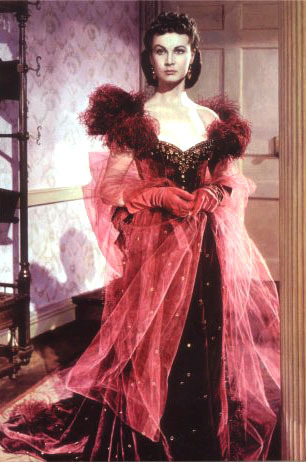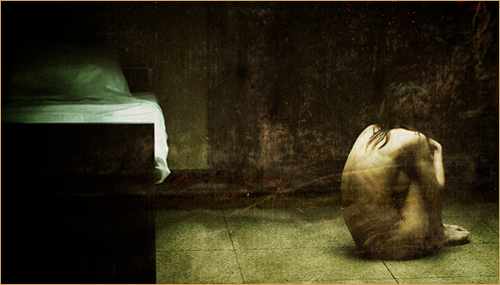Confessions of a Film Junkie: A review of “Scary or Die”
By: Brian Cotnoir
 I’ve been noticing
that there are more films like this appearing on Netflix. This isn’t a film with one story, rather than
it is a multiple short films linked together by a thin strand of plot to make
one full length film. There are a few
decent ones I’ve seen. “Devils Carnival” is probably the best one I’ve seen
(yes, I’m counting it because each character got their own individual story and
song that was linked together by Lucifer telling 3 of Aesop’s Fables to the
character Daniel). There’s also “V/H/S/”
and “The Theatre Bizarre”. The film I’m
reviewing this week is called “Scary or Die”.
The plot to the film is based off a mysterious stranger searching
through videos on a website called Scaryordie.com where there are different
stories and videos for a person to click on and learn a story. One interesting thing about this film is some
of the actors appear in more than one story, but it doesn’t affect the plot of
the film as a whole; not even in the slightest bit. Rather than talk about the film as a whole
I’m just going to give a brief summary of each story and what I thought about
it. There will be Spoilers in this
review because I particularly didn’t find any of them to be all that good. If you want more reasons why just read the
rest of this review.
I’ve been noticing
that there are more films like this appearing on Netflix. This isn’t a film with one story, rather than
it is a multiple short films linked together by a thin strand of plot to make
one full length film. There are a few
decent ones I’ve seen. “Devils Carnival” is probably the best one I’ve seen
(yes, I’m counting it because each character got their own individual story and
song that was linked together by Lucifer telling 3 of Aesop’s Fables to the
character Daniel). There’s also “V/H/S/”
and “The Theatre Bizarre”. The film I’m
reviewing this week is called “Scary or Die”.
The plot to the film is based off a mysterious stranger searching
through videos on a website called Scaryordie.com where there are different
stories and videos for a person to click on and learn a story. One interesting thing about this film is some
of the actors appear in more than one story, but it doesn’t affect the plot of
the film as a whole; not even in the slightest bit. Rather than talk about the film as a whole
I’m just going to give a brief summary of each story and what I thought about
it. There will be Spoilers in this
review because I particularly didn’t find any of them to be all that good. If you want more reasons why just read the
rest of this review.
The Crossing
 The First Story in
“Scary or Die” is “The Crossing”. It’s a
story about two red necks, who live in Arizona, and their hoochie
girlfriend. Recently, the two rednecks
have been abducting Mexican immigrants from all over the state, driving them
out to the border and executing them to “send a message” to all other illegal
immigrants who think about sneaking into the country. One day after murdering and burying their two
latest victims, one of them decides to add insult to injury by pissing all over
the graves. This for some reason or
another leads to the Mexican immigrants coming back as zombies and they attack
the rednecks and the hoochie girlfriend.
The zombies kill the rednecks, but the hoochie girlfriend manages to
escape, but she is later shot by the Border Patrol when she is mistaken for
zombie; implying that the Border Patrol was already aware of this zombie problem. In my opinion this was the least awful of the
stories in the film. It’s short, sweet, to the point, and the make-up effects
are half-way decent.
The First Story in
“Scary or Die” is “The Crossing”. It’s a
story about two red necks, who live in Arizona, and their hoochie
girlfriend. Recently, the two rednecks
have been abducting Mexican immigrants from all over the state, driving them
out to the border and executing them to “send a message” to all other illegal
immigrants who think about sneaking into the country. One day after murdering and burying their two
latest victims, one of them decides to add insult to injury by pissing all over
the graves. This for some reason or
another leads to the Mexican immigrants coming back as zombies and they attack
the rednecks and the hoochie girlfriend.
The zombies kill the rednecks, but the hoochie girlfriend manages to
escape, but she is later shot by the Border Patrol when she is mistaken for
zombie; implying that the Border Patrol was already aware of this zombie problem. In my opinion this was the least awful of the
stories in the film. It’s short, sweet, to the point, and the make-up effects
are half-way decent.
Tae Jung’s Lament
“Tae Jungs Lament” had
the most predictable story in “Scary or Die”.
It’s the story about a mourning widower named Tae Jung who lives in Los
Angeles, and he basically wanders around looking sad and mourning his late
wife. One day he witnesses a beautiful
women being abducted by a stranger.
Rather than use commonsense and report the abduction to police like a
sane person, he instead goes after the abductor and tosses his IPhone into the
car and then tracks the IPhone’s location on his laptop (again not ONCE does he consider calling
the police and telling them he witnessed an abduction and that he was able to
secretly track where this guy was going.
Tae Jung eventually finds them, knocks at the abductor and saves the
woman. The woman’s named is Min-ah (ßDRACULA REFERENCE!) and she
is so thankful for Tae Jung coming to rescue her, so she invites him over to
give him a reward. Unfortunately for
Tae Jung, the Min-Ah turns out to be a vampire and the guy who abducted her was
actually a vampire slayer, so sucks to be Tae Jung. If only he would’ve called the police and
reported the incident instead, he could have avoided this whole silly little
incident.
Re-Membered
It’s “The Tel-Tale
Heart”, but instead of a guy being buried under the house and the person
thinking they can hear the victims heart beat, it’s a dismembered body in the
trunk of the car and the driver thinks he hears a person knocking on the
trunk. It’s boring and it’s unoriginal.
Clowned
 |
| The Real reason we all checked it out. He's on the Poster and the DVD Cover. |
This is the longest
story in “Scary or Die”, it’s about a man named Emmet, whose just trying to
survive and take care of his mother and little brother. The day of his little brother’s birthday
party, he is attacked and bitten on the leg by “Fucko the Clown”. If being called “Fucko the Clown” wasn’t
ridiculous enough, he also wears the exact same costume and make-up that
American serial killer John Wayne Gacy wore; No freaking subtlety
whatsoever! It’s clear as day that this
clown was meant to look just like John Wayne Gacy! The clowns bite begins to take an effect on
Emmet and he slowly begins to turn into a “Were-Clown”??? I don’t f*cking know! This film story makes
no sense and it’s kind of all over the place.
Anyway Emmet tries to find the Clown that bit him so he can protect his
brother, but the longer Emmet stays a clown the more psychotic he becomes and
yearns to eat other peoples flesh. He
eventually saves his little brother Andy from being killed and eaten by Fucko
the Clown, but then Emmet decides he can no longer go on living for fear that
he might harm his little brother or another child. So he hangs out around a
play ground the police show up, he pulls out a fake gun and the police kill
him.
 |
| That is some Wicked Make-Up :) |
Make’s no God d@mn sense,
huh? This story tries to condense and
force out way too much material in a short span. I will say this though; Emmet does turn into
a pretty gnarly clown with this permanent evil grin on his face. Even in the scenes where he’s sad and crying
he still has that evil smile on his face and it just looks cool. That unfortunately is the only positive thing
I have to say about this part of the film.
It was a stupid idea and it was poorly executed.
Lover Come Back
 |
| Spoiler alert: Her character is the framing device! |
The last story in
“Scary or Die” is also the shortest and the Worst part of the film. A woman is beaten to death by her abusive
husband, her grandfather was a Voodoo Priest or Witch Doctor or I don’t give a
crap, and anyways he cast a spell on her as a child so she has the ability come
back from the dead so she does and she finds her ex-husband and kills him. The
End!





_NRFPT_01.jpg)

















